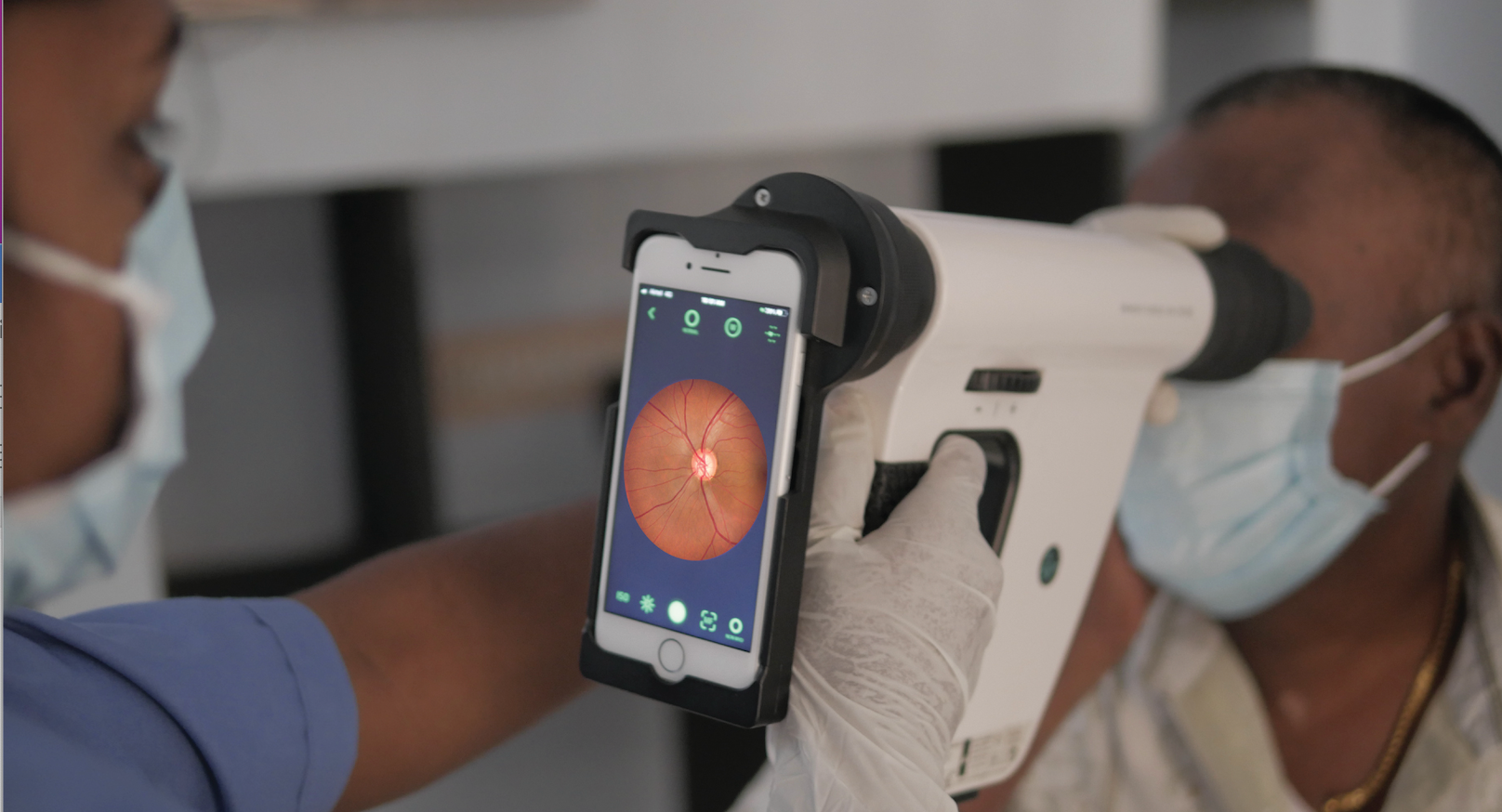Article
ICYMI: Smartphone-based fundus camera provides option for glaucoma screening
Author(s):
Automated AI tool offers offline capability and hope for patients.
A smartphone us used to view a fundus image.

Reviewed by Divya Parthasarathy Rao, MD
Glaucoma is a major sight-threatening problem worldwide, and in developing countries the threat to eye health is even greater because the disease is undetected in large numbers of patients.
According to Divya Parthasarathy Rao, MD, of Remidio Innovative Solutions Inc, USA, more than 90% of cases are undetected. Following detection, 50% already have advanced disease and 20% already are blind.
Glaucoma screening has taken a big leap forward toward resolving this challenge with the development of a novel automated artificial intelligence (AI) tool, Medios AI-Glaucoma. The performance is promising, and it has offline capability, ie, it can be used on the edge without the need for internet access and cloud-based interfacing, with reporting in less than 10 seconds, according to Rao.
Prospectively validated automated technology, she pointed out, can widen the reach of glaucoma care to underserved regions.
Testing the AI device
Rao and colleagues evaluated the diagnostic capabilities of a smartphone-based fundus camera with an offline AI tool for glaucoma screening in a prospective study of 243 subjects at a tertiary glaucoma center in India. The study ran between July 2021 and February 2022. All participants had glaucoma of varying severities, were glaucoma suspects, or served as normal controls.
The investigators captured disc-centered images using a clinically well-validated, portable fundus camera. The goal of the study was to determine if this tool can detect referable glaucoma, defined as definite structural and functional retinal changes related to glaucoma. The results obtained with the device were compared to the final diagnoses made by specialists after a glaucoma workup that included a clinical assessment, spectral-domain optical coherence tomography, and Humphrey visual field assessment.
The tool performed well compared with the results of a full glaucoma workup performed by a glaucoma specialist.
“Among the 243 patients, the sensitivity of the AI tool to detect referable glaucoma was 93.7% (95% confidence interval [CI], 87.6%-96.9%), the specificity was 85.6% (95% CI, 78.6%-90.6%), the positive predictive value was 84.6%, and the negative predictive value was 94.2%,” the investigators wrote. They also pointed out that there was minimal over-referral of normal subjects (recall for “no glaucoma” was 94.7%; 95% CI, 87.2–97.9%).
Compared with image grading alone performed by 3 glaucoma specialists, the results were impressive. The specialists detected 60% of patients with true glaucoma compared with 94% detected by the AI tool using the same images.
“AI may have learned to detect subtle structural changes that are not evident to the human eye,” Rao said.
Future work
Following this study, the company will put the AI tool through its paces in a real-world prospective study in a community, with the goal of testing its performance based on the glaucoma severity. The study under discussion was limited to a population in southern Asia, but the next step in the evaluation will include patients from multiple ethnic groups.
Based on the current results, the investigators consider the AI tool’s ability to screening for glaucoma as “promising.”
A key advantage of this device is that it can be incorporated into an inexpensive and portable camera without compromising the efficiency and accuracy. It also provides instant results, and may have the potential to have a major impact on screening for this vision-threatening disease. In addition, it can be used by health care workers in communities with limited resources to provide much-needed eye care.
Divya Parthasarathy Rao, MD
E: drdivya@remidio.com
Rao is an employee of Remidio Innovative Solutions Inc, USA.
Newsletter
Don’t miss out—get Ophthalmology Times updates on the latest clinical advancements and expert interviews, straight to your inbox.





